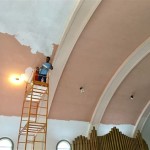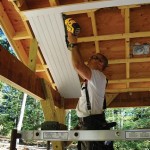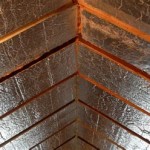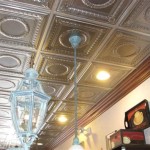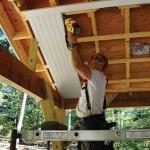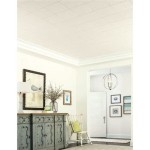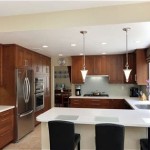How Much It Costs to Install Beadboard Ceiling
Installing beadboard on your ceiling can be a great way to update and enhance any room in your home. Following is a discussion of the critical factors that are included when calculating the installation cost of beadboard on your ceiling.
Materials
The cost of beadboard for your ceiling will depend on the quality and dimensions of the pieces you buy. The beadboard is typically sold by the square foot, and the price can range from $0.50 per square foot for budget-friendly options to $5 per square foot for higher-quality beadboard. You will also need to purchase nails or screws, adhesive, and paint or sealant to complete the installation. The total cost of materials will vary depending on the size of your ceiling and the product quality you choose.
Labor
If you are not comfortable installing beadboard yourself, you can hire a contractor to do the job for you. The cost of labor will vary depending on the contractor's experience and location. However, you should expect to pay between $5 and $15 per square foot for labor.
Tools
If you plan on installing the beadboard yourself, you will need to purchase some tools. Some of the necessary tools include a saw, a hammer or nail gun, a level, and a caulk gun. You may also need to rent a scaffolding or ladder to reach the ceiling.
Other Factors
There are a few other factors that can affect the cost of installing beadboard on your ceiling. These factors include:
- The size of the room: Larger rooms will require more materials and labor, which will increase the cost of installation.
- The height of the ceiling: Higher ceilings will require more scaffolding or ladders, which can also increase the cost.
- The condition of the ceiling: If your ceiling is in poor condition, you may need to repair it before installing beadboard, which can add to the cost.
DIY vs. Hiring a Contractor
Whether you decide to install the beadboard yourself or hire a contractor is a personal decision, which depends on your budget and skill level.
If you are handy and have some experience with home improvement projects, you may be able to save money by installing the beadboard yourself. However, if you are not comfortable working with power tools or you have a large or complex ceiling to cover, it is best to hire a contractor to do the job for you.
Conclusion
To summarize, the actual cost of installing beadboard on your ceiling will be determined by several elements, including the dimensions of your ceiling, the quality of beadboard you pick, the complexity of the project, and your location. However, by taking all of these factors into account, you should be able to understand the ballpark figure for your project and improve the aesthetic appeal of your home with a stylish and practical beadboard ceiling.

How Much Does It Cost To Install A Beadboard Ceiling 2024 Data Angi

Diy Beadboard Ceiling Tutorial Easy And Inexpensive Custom Treatment

How To Install A Beadboard Ceiling Pine And Prospect Home

How To Install A Beadboard Ceiling Pine And Prospect Home

How To Install Beadboard Panels On A Ceiling And Why We Ll Never Do It Again The Lake Land

How To Install A Beadboard Ceiling Pine And Prospect Home

Beadboard Ceiling What It Is And How To Install Yourself

How To Install Beadboard Panels On A Ceiling And Why We Ll Never Do It Again The Lake Land

Cost To Install Wainscoting S Fixr

How To Install A Wood Plank Ceiling Young House Love
Related Posts

